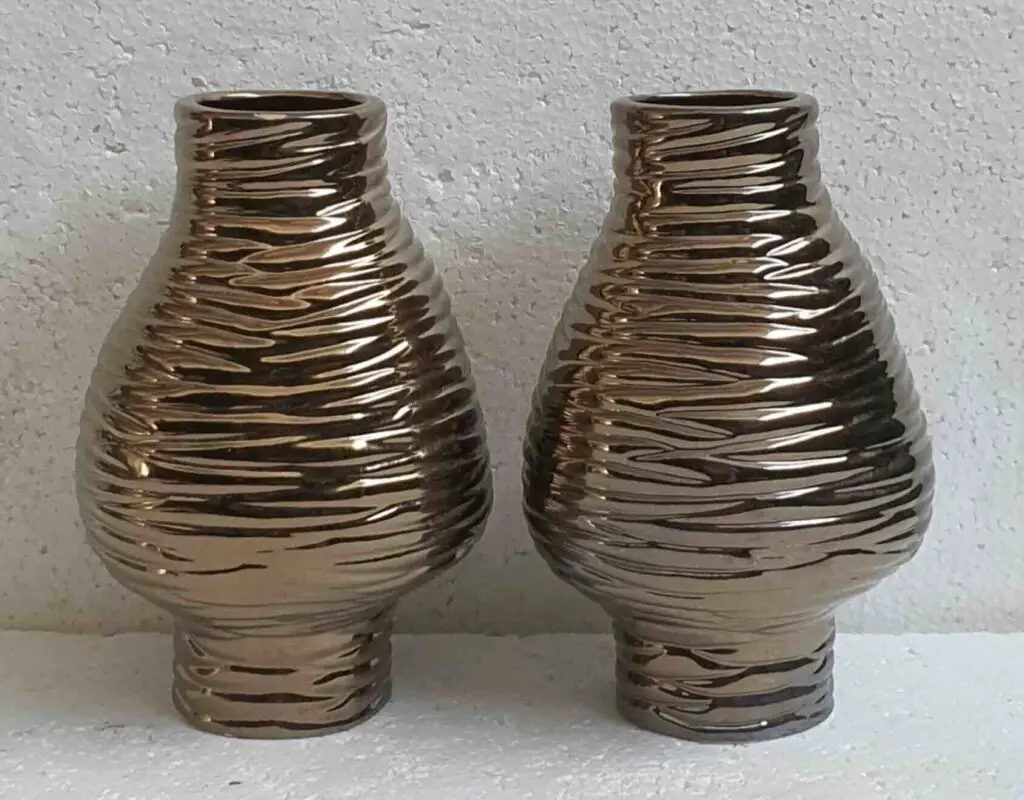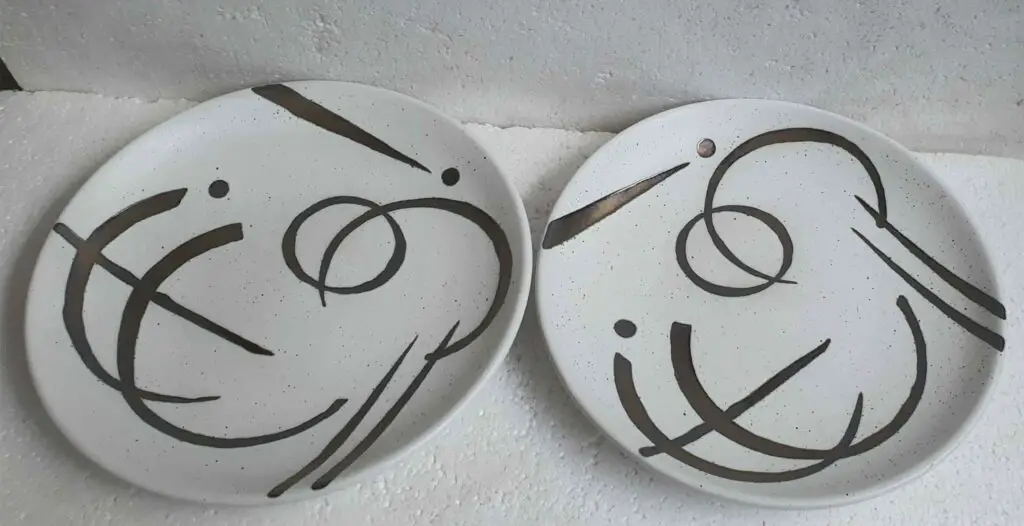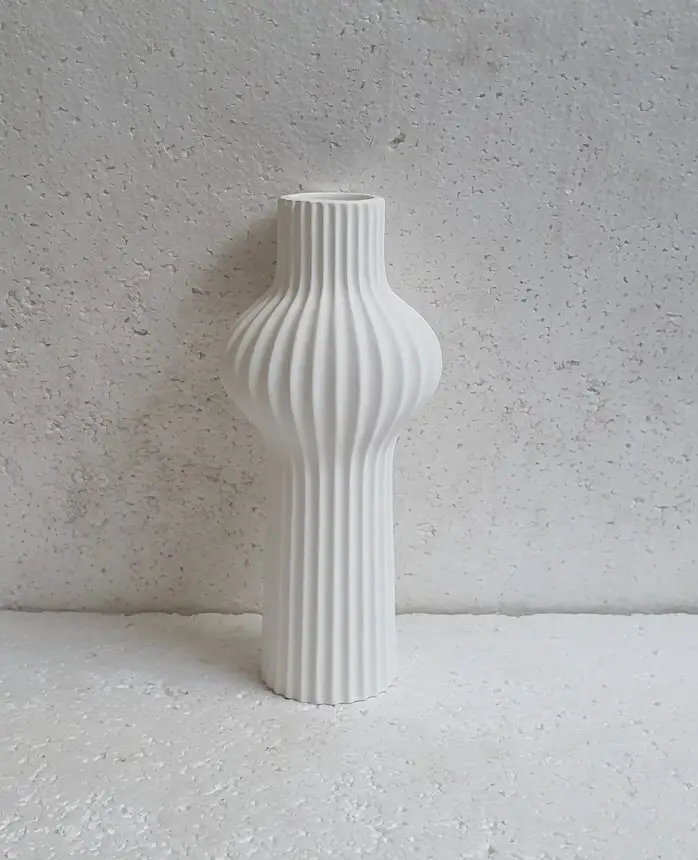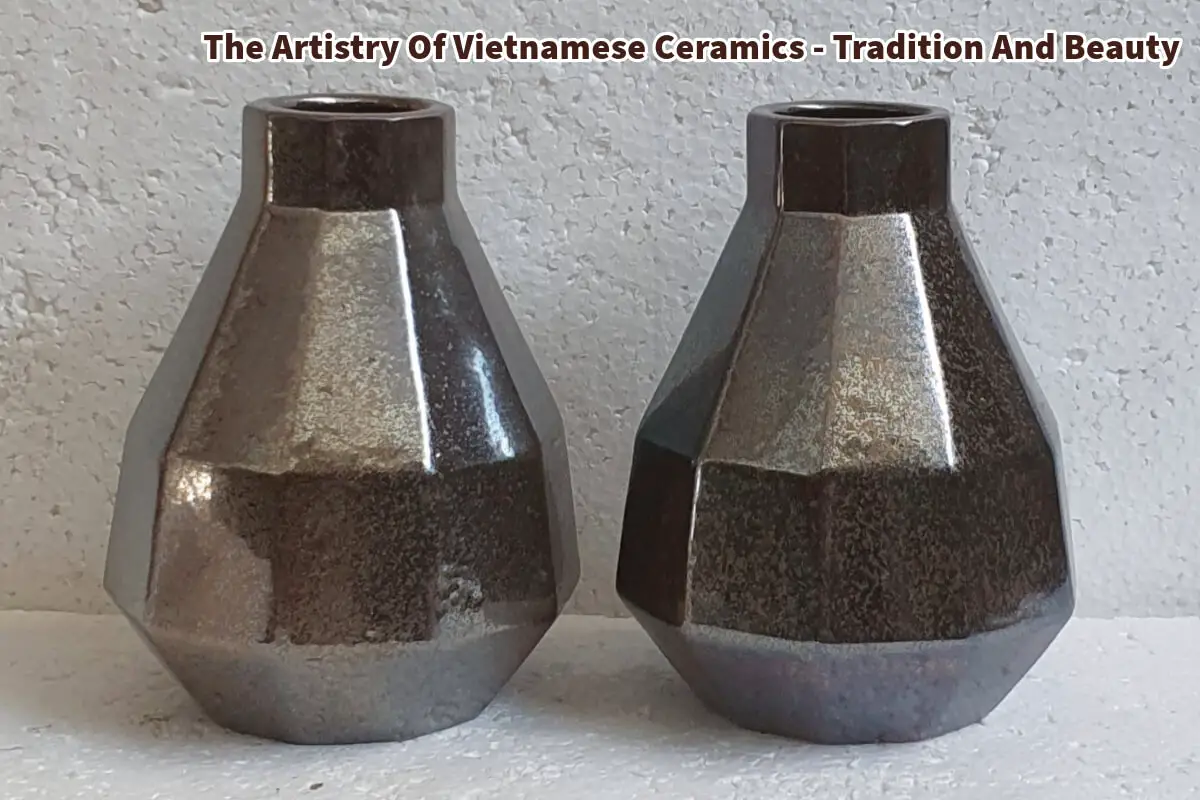Since I first came to Vietnam in the early 1990s, I have enjoyed Vietnamese ceramics. I am fascinated by Vietnamese and Arabic production.
Vietnam has a rich history of ceramic production that dates back centuries. Many of their techniques use ancient materials while making them into a more modern medium. My journey in ceramics began many years ago, and since then, I have seen many ceramic factories in production throughout Asia. That is why I can say today that Vietnam is a leader in ceramic manufacturing.
Table of Contents
- Embracing The Artistry Of Vietnamese Ceramics: A Journey Of Tradition, Innovation, And Beauty
- The Importance Of Ceramics Through Ages
- 10 Reasons We Love Vietnamese Ceramics
- Why You Should Love Vietnamese Ceramics Too
- Related Content
Embracing The Artistry Of Vietnamese Ceramics: A Journey Of Tradition, Innovation, And Beauty
Few materials captivate my imagination in design and home decor quite like ceramics. There’s a tangible allure to this ancient material, a medium that has transcended centuries, cultures, and technological advancements while retaining its intrinsic value and beauty.
My journey with ceramics began with an old ceramic plate, approximately 400 to 500 years old, hailing from China. This artifact, a silent witness to the ebb and flow of civilizations, sparked my fascination with ceramics—a fascination that deepened upon exploring the rich ceramic traditions of Vietnam.

What Are Ceramics?
At its core, ceramics is an inorganic, non-metallic solid crafted through the meticulous shaping of metal or non-metal compounds, followed by hardening under intense heat. As ancient as civilization, this process involves either hand molding or using molds before the items are placed in kilns—massive ovens that achieve the high temperatures necessary for firing ceramics.
My travels to ceramic manufacturing hubs in China and Vietnam revealed the enormity of these kilns, designed to accommodate and simultaneously fire numerous pieces. They are a testament to the scale and ambition of ceramic production.
Interestingly, while most modern kilns are powered by gas or electricity, I encountered the rare sight of wood-fired kilns in Vietnam. Though less common, this traditional method is revered for imparting a unique finish to ceramics, a nod to the artisans’ dedication to preserving heritage techniques.
The Importance Of Ceramics Through Ages
Ceramics have played pivotal roles across cultures, from the utility of storing water and cooking to the luxury of ornate vessels made of gold and silver in the pre-Islamic period.
China, synonymous with porcelain (“china” in common parlance), has been a juggernaut in ceramic production. Yet, nestled within this global narrative is Vietnam, a country with a ceramic legacy as rich and enduring as its famed neighbor.
Vietnam’s Rich Ceramic Tradition
Vietnam’s ceramic history stretches back millennia, with entire families and villages dedicating themselves to the craft for generations. A visit to a ceramic village, Bat Trang, outside Hanoi is akin to stepping into a living museum, where the air is thick with the scent of clay and the warmth of kilns and where artisans greet you as guests and fastnesses to their life’s work.
Ceramics is woven into the fabric of Vietnamese culture, evident in the ubiquity of ceramic vases, plates, and pots in homes and the charming sight of ceramic pots adorning streets, cradling lush greenery.
10 Reasons We Love Vietnamese Ceramics
My admiration for Vietnamese ceramics is manifold, but here are ten reasons why these pieces hold a special place in my heart—and why they might captivate yours, too.
1. Unique Finishes
Vietnamese ceramics are renowned for their diverse and creative finishes. The variety is endless, from glossy glazes that reflect the sky to matte finishes that speak of the earth. Each finish, whether crackled, smooth, or textured, tells a story of the artisan’s intent and the natural elements that play a role in the firing process.
2. Distinctive Shapes
The shapes and designs of Vietnamese ceramics are as varied as the country’s landscape. From traditional forms passed down through generations to modern interpretations that challenge the norm, Vietnamese ceramics push the boundaries of what’s possible, making each piece a work of art.
3. Skilled Artisans
The craftsmanship of Vietnamese ceramics is unmatched, with techniques honed over generations. Artisans in Vietnam possess a deep understanding of their materials and processes, allowing them to create pieces that are not only beautiful but also intricate and precise. Every curve, line, and color shows their dedication to the craft.
4. Competitive Pricing
Despite their high quality and artistic value, Vietnamese ceramics are surprisingly affordable. This competitive pricing makes it possible for a broader audience to own a piece of this rich tradition, bridging cultures and bringing the beauty of Vietnamese craftsmanship into homes worldwide.
5. Living Tradition
Vietnamese ceramics are not just artifacts of the past; they are a living, breathing tradition. Artisans today continue to innovate while respecting the techniques and stories of their ancestors. This blend of the old and the new ensures that Vietnamese ceramics remain relevant and cherished in the contemporary world.
6. Variety Of Clays
The diversity of clay found in Vietnam contributes significantly to the uniqueness of its ceramics. Different regions offer different types of clay, each with its characteristics. This regional variety allows for a broad range of textures, weights, and appearances in Vietnamese ceramics, making each piece distinctly tied to its place of origin.
7. Rich Cultural Heritage
Vietnamese ceramics are deeply rooted in the country’s history and culture. Each piece reflects Vietnam’s past, from dynastic eras to colonial influences. This rich cultural heritage is embedded in today’s artisans’ motifs, designs, and techniques.
8. Global Appeal
While deeply Vietnamese, the ceramics have a universal appeal, blending seamlessly with various worldwide interior design trends and preferences. This global appeal has made Vietnamese ceramics highly sought after by collectors, designers, and enthusiasts alike.
9. Sustainability
In an age where sustainability is increasingly essential, Vietnamese ceramics stand out for their eco-friendly production methods. Many artisans use natural, locally sourced materials and traditional firing techniques that minimize environmental impact, making Vietnamese ceramics a responsible choice for conscious consumers.
10. Symbol Of Unity
Vietnamese ceramics symbolize unity, bringing together communities of artisans, families, and even villages. The communal aspect of ceramic production, from gathering clay to firing in communal kilns, underscores the importance of collaboration and shared heritage in Vietnamese culture.
These ten reasons underscore why Vietnamese ceramics hold a special place in the hearts of many. Beyond their aesthetic beauty and practical utility, these ceramics embody a blend of tradition and innovation, connecting us with a rich cultural narrative that continues to evolve.
As we cherish and collect these pieces, we’re not just acquiring objects; we’re embracing stories, skills, and a heritage shaped by the hands and hearts of Vietnamese artisans through the ages.
The allure of Vietnamese ceramics extends beyond these tangible attributes, delving into the essence of what it means to create something that stands the test of time and embodies both function and beauty.

Why You Should Love Vietnamese Ceramics Too
The reasons to cherish Vietnamese ceramics are as diverse as the pieces themselves. From their rich history and cultural significance to the tangible benefits of supporting traditional crafts, these ceramics offer more than just aesthetic appeal. They are a connection to a legacy of artisanal excellence, a tribute to the human capacity for creativity and innovation.
The Process: From Clay To Art
Witnessing clay transform into a stunning ceramic piece is nothing short of magical. In Vietnam, this process begins with carefully selecting clay, each type imbued with its properties and potential. Artisans blend tradition with innovation, employing age-old techniques while incorporating modern design elements that speak to a global audience.
The clay undergoes a meticulous preparation process, being kneaded, shaped, and sometimes left to dry for days before it even sees the inside of a kiln. This preparatory stage is crucial, as it determines the ceramic piece’s structural integrity and final appearance.
Once shaped, the pieces are glazed, a step that adds color and finish and protects them from water and wear. Glazing is where the true magic happens, with artisans applying various colors and techniques to create effects ranging from glossy and smooth to textured and matte.
The choice of glaze, often derived from natural minerals, can also influence the firing process, leading to unique outcomes that are sometimes left to the whims of the kiln gods.
Firing is the culmination of the ceramic-making process, a transformative phase where the kiln’s intense heat solidifies the clay and glaze.
Though less common, traditional wood-fired kilns add a distinct character to the ceramics, infusing them with subtle variations and a depth of color that cannot be achieved through electric or gas firing. This method, requiring precise control and a deep understanding of the materials, highlights the artisans’ connection to their craft and environment.
The Global Reach Of Vietnamese Ceramics
Vietnamese ceramics have found their way into homes and hearts across the globe, celebrated for their unique blend of tradition, craftsmanship, and aesthetic appeal. Their versatility has made them a favorite among interior designers, collectors, and anyone who appreciates handmade, artisanal goods.
The global demand for these pieces supports the local economy and the artisans’ communities and helps preserve a cultural heritage passed down through generations.

Preserving Tradition While Innovating
The future of Vietnamese ceramics lies in the delicate balance between preserving traditional methods and embracing innovation. Artisans and designers continually experiment with new techniques, designs, and materials while staying rooted in their craft’s rich history and cultural significance.
This dynamic approach ensures the survival and relevance of Vietnamese ceramics in a rapidly changing world, making each piece a testament to the resilience and adaptability of the human spirit.
My journey into the world of Vietnamese ceramics has been one of discovery, appreciation, and profound respect. From the ancient plate that sparked my interest to the modern pieces that continue to inspire, the story of Vietnamese ceramics is a narrative of human creativity, cultural identity, and the enduring appeal of handmade art.
Whether you are a seasoned collector or a casual admirer, the beauty and craftsmanship of Vietnamese ceramics have the power to captivate and enchant. As we embrace these treasures, we decorate our homes and honor the artisans and the rich cultural heritage they represent.
We would love to talk to you if you want to see how we can help you with any of your ceramic production.
Find out more about how Mondoro can help you create, develop, and manufacture excellent home decor and furniture products – don’t hesitate to contact me, Anita. Check out my email by clicking here or become a part of our community and join our newsletter by clicking here.
Mondoro gives out a FREE Lookbook to anyone interested. You can receive a copy of our latest Lookbook by clicking here.
Listen to our Podcast called Global Trade Gal. You can find it on all major podcast platforms. Try out to listen to one of our podcasts by clicking here.
Subscribe to our Mondoro Company Limited YouTube Channel filled with great videos and information by clicking here.
Related Content
How to Manufacture Vietnamese Lacquerware? An Insider’s Guide To Lacquer
Vietnamese lacquer requires many manufacturing steps in the lacquer production process, including making the base, preparing the lacquer base to be applied, and finally, applying the lacquer paint onto the surface. Every piece must be carefully sanded to give it a very smooth surface. Vietnamese lacquerware production requires a lot of skill and knowledge.
You can discover more by reading How to Manufacture Vietnamese Lacquerware? An Insider’s Guide To Lacquer by clicking here.
10 Great Vietnamese Home Décor Product Finishes and Techniques We Love
We love many techniques, materials, and finishes in Vietnam, but some of our favorites are Vietnamese lacquer, mother of pearl, eggshell, and faux paper finishes. We also do some unique woven rattan and linen techniques.
You can discover more by reading 10 Great Vietnamese Home Décor Product Finishes and Techniques We Love by clicking here.
Vietnam’s Top 10 Handicraft Villages Discovered
Today 10 Vietnamese handicraft villages are still manufacturing many of the same products they have produced for hundreds if not thousands of years. Some of these villages include Bat Trang Ceramic Village, Duyen Thai Lacquer Village, Quat Dong Embroidery Village, Van Phuc Silk Village, Kim Son Sea Grass Village, Ninh Binh Water Hyacinth Villages, Chuong My Rattan Village, Thuong Tinh Horn Village, Thanh Oai Conical Hat Village, and Xuan Lai Bamboo Village.
You can discover more by reading Vietnam’s Top 10 Handicraft Villages Discovered by clicking here.

